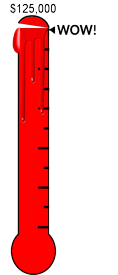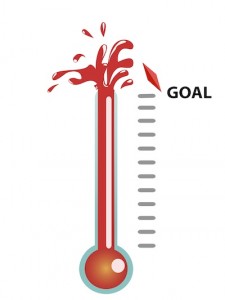

Thanks to your support in 2020!
 Thank you for helping us exceed our $125,000 2020 charity goal!
Thank you for helping us exceed our $125,000 2020 charity goal!
Textile Waste Diversion’s business model is centred on the goal of maximizing the fundraising potential of used clothing collections for registered charities.
We do this in a few ways:
Our main contract is with the Canadian Community Support Foundation. We handle all their logistic and maintenance requirements. We are proud working for them because 100% of what they earn through textile recycling goes back into local Ontario registered charities. They support food banks, hospices, seniors & youth programs, shelters and missions across Southern Ontario and have just expanded into Quebec. They do fabulous work.
Besides providing them with meticulous service, in 2020 we also donated advertising and postage costs for the year to CCSF and started a province wide bin upgrade to fire resistant locally sourced steel.
In 2020, our goal is to also donate to CCSF a dedicated office space in Toronto, Ontario. CCSF currently has its head office in Ottawa, but seeing as their collection route has since expanded all the way to Windsor, we felt they could use an additional dedicated space that is centrally located. We also have donated two staff members that work 10 hours a week each assisting with customer service and office requirements.
Another service we currently offer is a brokering service. Many small rural charities (like women’s shelters, missions) collect used clothing but often cannot use much of what is collected. Although it may be too much to store, it may not be enough quantity for them to broker, as most grading facilities only accept large quantities. Often these items get re donated to thrift stores, at little to no benefit to the charity that received it. TWD offers these organizations a guaranteed fair flat rate per pound, so that they can maximize the fundraising potential of the donations they cannot use. We then pool these items with the smaller collections from similar charities across the province and broker it in the quantity graders prefer. This then generates more funds for CCSF, adding even more bang to the original donation!
On a personal note:
We were really moved by the plight of animals after four abandoned kittens were found in a bin we service last year. We sponsored their adoptions and it was a very touching time for us. We also donate actionable housewares donations that CCSF cannot use to a grass roots community group that raises money for veterinary care for special needs.
As many of you know, we also have a therapy dog in our office Sarah, who is a senior and terminally ill with cancer. She’s doing well, but it only reminds us how precious animals are. In 2020 we aim to do more for animal welfare.